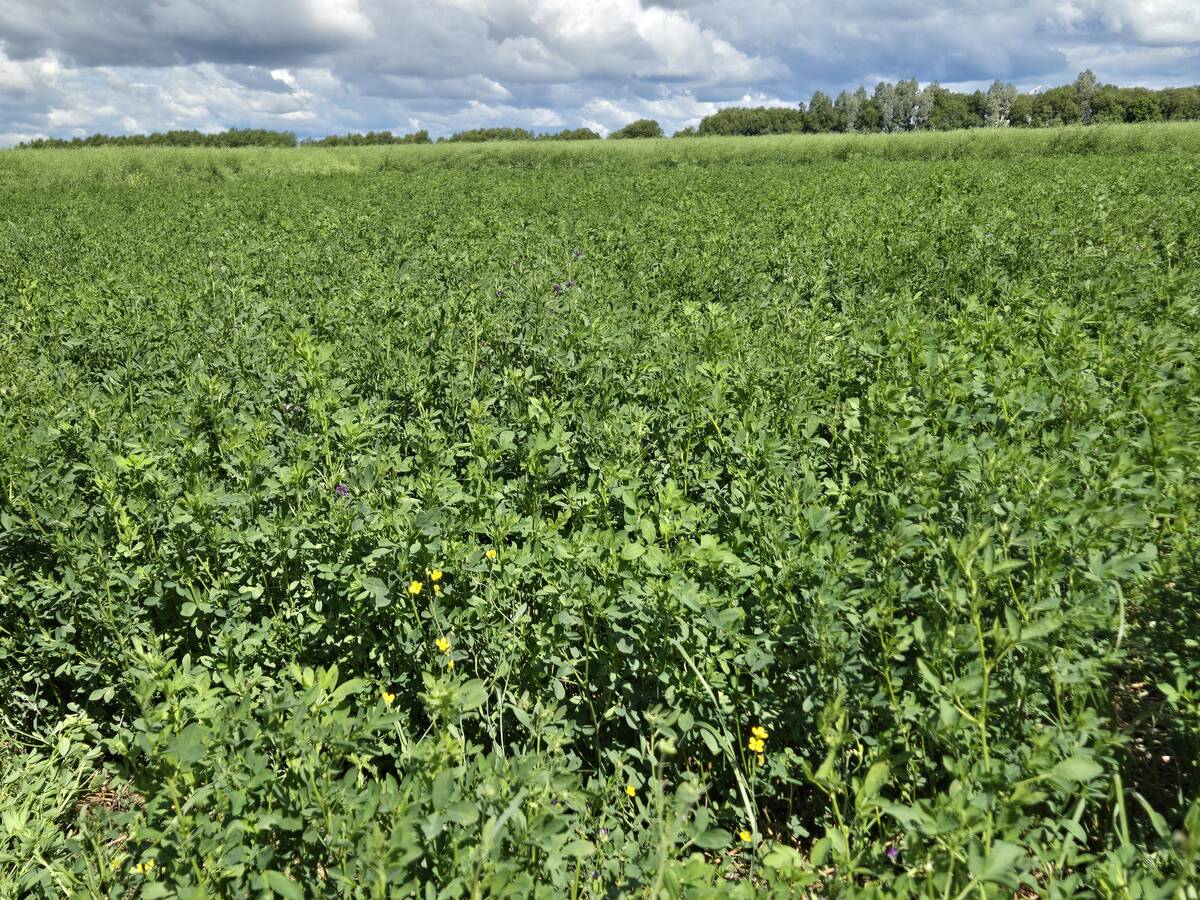OKOTOKS, Alta. – The day before 36-year-old feedlot worker Kevan Chandler died, he talked about his work with his wife, Lorna.
His day had included cleaning out a silo where crusted grain clung to the inside walls. He had climbed about eight metres up an interior ladder to knock it down so it could be shovelled out.
“What would happen if the grain collapsed?” she asked.
“I’d go with it,” he said.
The next day, while cleaning out a silo at Tongue Creek Feeders south of Calgary, an avalanche of grain crashed down on him. By the time his work partner, Matt Drabbe, dragged him out by the legs through an escape hatch, it was too late.
Read Also

Manitoba Parkland research station grapples with dry year
Drought conditions in northwestern Manitoba have forced researchers at the Parkland Crop Diversification Foundation to terminate some projects and reseed others.
Since that day two and a half years ago, Lorna Chandler has worked to improve safety conditions for farm workers injured or killed on the job. Her efforts resulted in a provincial inquiry into her husband’s death held in Okotoks Oct. 22-23.
Alberta agriculture workers are exempt from worker’s compensation, occupational health and safety and the provincial labour code.
“We think Kevan’s death would have been prevented because safety standards would have been in place and Kevan would have received proper safety training and a better ability to do an effective risk assessment, thus having the judge recommend changes to the above acts and codes,” Chandler read from a prepared statement.
After his death, she received an insurance payment from the company’s group benefit plan but she wanted answers and better working conditions for others.
With support from family and friends, Chandler wrote letters to government and talked to media trying to apply pressure to get her day in court.
“There is no need for this to happen to anyone ever again. I am sure all the deaths were preventable,” she said in an interview.
Her husband’s death was the third fatality at the Tongue Creek facility since 2002.
After the 2006 accident, feedlot owner Peter Morrison contacted Eric Jones to investigate and recommend improvements.
Jones, a retired Alberta Agriculture employee who worked as a farm safety specialist, investigated 650 deaths during his 32 year career. He now works as a private consultant developing safety protocols for farms.
He investigated the site, interviewed workers and issued a report containing recommendations.
He told the court that the feedlot had an employee manual with safety procedures, but activities were not well documented and communication among workers and supervisors was lacking.
He said staff should have been trained how to check sites for dangers before starting work. This is required in other industries but not on farms.
“There is no standard industry practice in agriculture. We are exempt from health and safety law,” Jones said.
He said silos, which are not widespread in Alberta, are difficult to clean.
Drabbe testified that on the day of Chandler’s death he advised his partner not to go inside because it was too dangerous. The clumpy grain was piled about six metres high and stuck against the walls.
Jones said a safety harness or other similar equipment would have made no difference.
“It was a moment of judgment that he made and nothing in the regulations would have changed that.”
Jones said it is difficult to impose farm safety regulations on a diverse population with little appetite for government oversight.
“We have more than 50,000 farms in Alberta,” he said.
“Can you imagine some officer running around to every farm and trying to enforce legislation? It is impossible.”
As well, he said Alberta Agriculture’s farm safety division is understaffed with two part-time and one temporary worker.
He recommended that the government set up an expert committee that includes farmers to develop training standards and a best practices code.
Yan Lau of Alberta’s immigration and employment department said a cultural shift is needed if regulations are to work.
“The stakeholders have to buy in. If you try to impose something, stakeholders will not buy in and you will not have enough officers to enforce the rules.”
Laurel Aiken, one of Alberta’s two part-time farm safety co-ordinators, said education programs aimed at children are offered at trade shows, fairs and other community events. As well, information packages and safety recommendations are available for interested adults.
She said little improvement has been made in Alberta since the government began collecting statistics on farm related injuries and deaths in 1985. This is also the case across Canada, she added.
“There hasn’t been a notable decrease in the actual fatalities,” she testified.
Alberta has an average of 18 farm fatalities per year. Twelve Albertans died in farm related incidents in 2007.
Aiken said the government has not considered developing a British Columbia model with enforceable farm safety regulations and district specialists across the province. As well, the province stopped conducting fatality investigations after Jones’ retirement.
“It was felt we might be getting into dangerous territory because we didn’t have the legislation to do it,” she said.
Judge Peter Barley, who can only make recommendations for change in legislation, has promised a written decision by mid-November.

















